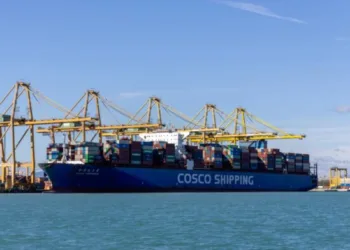For small fleets and owner-operators running on thin margins, idling is one of those hidden costs that can sneak up and eat thousands off your bottom line. But here’s the truth: not all idling is bad. Sometimes it protects your engine, your driver, and even your revenue. The key is knowing when idling makes sense and when it’s bleeding money you can’t afford to lose.
Why Idling Matters More Than You Think
Idling feels harmless because the truck isn’t moving but the meter’s still running. ATRI’s most recent data shows that a single hour of idling burns about 0.8 gallons of diesel. At today’s $3.71 per gallon national average, that’s $3.32 an hour. Doesn’t sound like much? Let’s do the math.
- One driver idles three hours a day waiting on docks.
- At $3.32/hour, that’s nearly $10 per day.
- Over 250 workdays, you’re looking at $2,500 per truck, per year just sitting.
Now multiply that across five trucks, and you’ve just spent over $12,500 on fuel that never moved you an inch. For a small fleet, that’s the cost of a set of drive tires or two full months of insurance premiums.
When Idling Actually Protects You
Idling isn’t always the enemy. There are times when shutting down does more harm than good.
1. Cold Starts in Winter
In freezing weather, shutting down and restarting multiple times can put serious stress on batteries, starters, and injectors. An extra hour of idle may burn $3 worth of fuel, but a no-start repair on a cold morning could run $600–$1,200 between towing and parts.
2. Protecting Sensitive Cargo
If you’re hauling temperature-sensitive freight like bottled wine, idling may be the only way to keep product within range. One rejected load can wipe out an entire month of profit. Fuel is cheap compared to cargo claims.
3. Safety and Comfort for the Driver
A driver parked overnight in 95-degree heat without A/C isn’t just uncomfortable — it’s unsafe. Heat stroke and fatigue create bigger risks than the cost of a few gallons of diesel. Same goes for frigid nights where heaters keep a driver functional.
When Idling Burns Your Bottom Line
Not all idle time is smart. Here’s where it crosses into wasted money.
1. At Shippers and Receivers
If you’re backed into a dock for three hours with no reason to keep the engine running, that’s money going up the stack. Discipline matters here. Train drivers to cut engines unless they need power for specific purposes.
2. At Fuel Stops and Breaks
Ten minutes at the pump while scrolling on the phone might not feel like much, but across a fleet it adds up. Multiply those “little moments” and you’ll find whole days of fuel wasted each year.
3. Traffic Jams and Staging Lots
If you know you’re going to be sitting more than five minutes, most manufacturers recommend shutting down. Modern engines can handle frequent restarts without damage. The old-school belief that idling is “better for the engine” just doesn’t hold up anymore.
The Hidden Costs Beyond Fuel
Fuel isn’t the only thing you lose. Excessive idling beats up your truck in ways that don’t show up until later.
- DPF Regens: Unburned fuel during idle loads up soot faster. More idling = more forced regens, which burn both fuel and time.
- Oil Contamination: Idling doesn’t fully heat oil, leaving more contaminants inside. That means more frequent oil changes or higher wear.
- Warranty and Resale: High idle hours show up on ECM reports. Buyers see it as poor maintenance, and warranty claims can even be denied for “excessive idle.”
A truck with 8,000 idle hours can look like it’s aged two extra years compared to one with disciplined idle habits.
Tactical Steps to Control Idling
This isn’t about eliminating idling altogether, it’s about controlling it.
- Track It: Most modern ECMs report idle percentage. Set a benchmark, aim for under 25% idle time per truck.
- Train Drivers: Show them the math. If a driver saves 1 hour of idle daily, that’s $800+ in annual savings. Offer bonuses tied to idle reduction.
- Invest in Solutions: Auxiliary power units (APUs), bunk heaters, or battery-based HVAC systems aren’t cheap, $8,000–$10,000 installed. But they can pay back in 2–3 years through fuel savings and reduced wear.
- Set Policies: Make “engine off at the dock” a company standard. Enforce it with random checks. Culture drives behavior.
- Plan Smarter: If you know certain shippers always hold you for hours, factor it into your rate negotiations. Idle time has a cost, and detention pay should cover it.
FAQs
Q: Is idling bad for modern engines?
A: It can be excessive. Today’s emissions systems aren’t built for long idle. Excessive idling leads to clogged DPFs, regens, and more shop visits.
Q: Should I invest in an APU?
A: If your fleet idles a lot for climate control, yes. At $3.71 diesel, an APU often pays for itself in 24–30 months.
Q: What’s an acceptable idle percentage?
A: Some OEM recommend staying under 25%. Anything over 30% consistently is eating into profit.
Q: Can I pass idle costs to brokers or shippers?
A: Only indirectly, through detention pay or rate negotiation. But discipline is still your responsibility.
Q: Does idling help warm up engines before driving?
A: Short warm-ups (3–5 minutes) are fine, especially in winter. Anything beyond that is wasteful. Driving under light load warms the engine faster and cleaner.
Final Word
Idling isn’t just about fuel, it’s about discipline. The mega fleets can spread idle waste across thousands of trucks. You can’t. Every gallon burned without moving is money straight out of your pocket.
But smart carriers know the difference. Idling to keep a driver safe or protect freight? That’s an investment. Idling because the driver doesn’t want to hit the start button again? That’s money down the drain.
The lesson is simple: track it, train it, and cut it where it hurts. Because in trucking, survival isn’t about what you gross, it’s about what you keep. And idle fuel is one cost you don’t need stealing your margin.
The post The Real Cost of Idling – When It Saves You Money and When It Burns Your Bottom Line appeared first on FreightWaves.




















